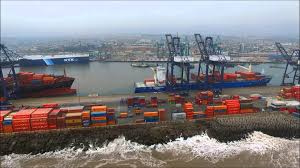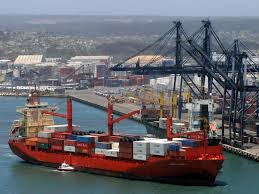What is the cargo handling capacity of the Port?

What is the cargo handling capacity of the Port?
What is the cargo handling capacity of the Port? The Port of San Antonio serves as a vital gateway for trade and commerce in Chile, boasting significant cargo handling capacity.
Understanding this capacity is essential for assessing the port’s role in the regional and national economy.
Here’s an overview of the cargo handling capacity and what it entails for the Port of San Antonio.
Annual Cargo Volume
The Port of San Antonio has an impressive annual cargo volume that positions it among the busiest ports in Chile.
On average, the port handles several million tons of cargo each year.
This volume includes a diverse array of goods, from agricultural products to industrial materials.
High cargo turnover underscores the port’s significance in facilitating trade for local and international markets.

Container Handling Capacity
The port is equipped with advanced container handling facilities capable of accommodating large volumes.
With numerous container cranes and specialized equipment, it efficiently manages containerized cargo.
The capacity for handling thousands of TEUs (Twenty-foot Equivalent Units) per year enhances operational efficiency.
This capability is crucial for meeting the demands of shipping lines and logistics providers.
Bulk Cargo Operations
In addition to containers, the Port of San Antonio specializes in bulk cargo operations.
The facilities are designed to handle various types of bulk goods, including liquid and dry commodities.
The ability to manage large volumes of bulk cargo further enhances the port’s versatility.
This capacity attracts a wide range of industries, including agriculture and mining.
Roll-on/Roll-off (Ro-Ro) Services
The port offers roll-on/roll-off (Ro-Ro) services for vehicles and heavy machinery.
This specialized handling capability is essential for industries that rely on transporting automobiles and equipment.
With dedicated ramps and storage areas, the port efficiently manages Ro-Ro operations.
This service expands the port’s cargo handling capacity and appeals to automotive and construction sectors.
Logistics and Distribution Facilities
The Port of San Antonio is complemented by logistics and distribution facilities that enhance cargo handling.
Warehousing and storage options enable efficient management of goods before and after shipping.
These facilities support inventory management and facilitate smoother supply chain operations.
Having logistics capabilities integrated within the port enhances overall operational efficiency.
Technology Integration
The port leverages advanced technologies to optimize cargo handling processes.
Automated systems and data analytics improve the speed and accuracy of operations.
Real-time monitoring allows for better resource allocation and scheduling.
Technology integration enhances the port’s capacity to handle growing cargo volumes effectively.
Future Expansion Plans
To accommodate increasing trade demands, the Port of San Antonio has future expansion plans.
These plans include upgrading facilities and enhancing infrastructure to boost handling capacity.
Investments in new technologies and equipment will further enhance operational efficiency.
Future expansions will ensure that the port remains competitive in the ever-evolving maritime industry.
The Port of San Antonio
The Port of San Antonio boasts significant cargo handling capacity, making it a key player in regional trade.
With robust capabilities in container handling, bulk operations, and Ro-Ro services, it serves diverse industries.
Technological integration and logistics facilities enhance operational efficiency and support future growth.
As the port continues to expand and adapt, it will play an even more crucial role in facilitating trade and economic development in Chile!





Leave a Reply